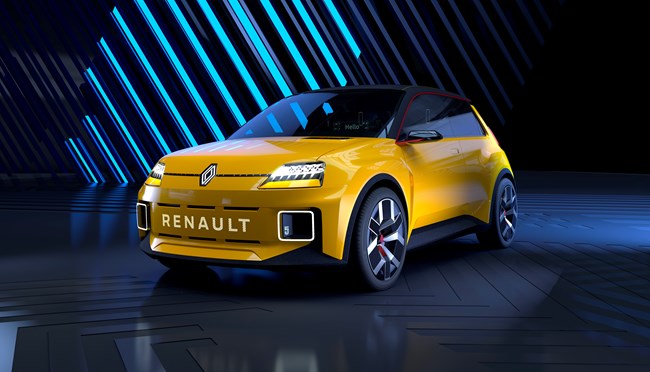We use cookies to ensure that we give you the best experience on our website. If you continue without changing your settings, we will assume that you are happy to receive all cookies on the Business Car website. However, if you would like to, you can change your cookies at any time

The start point for the best source of fleet information |
New Renault strategy includes new EVs and mobility brand
Date: 14 January 2021 | Author: Sean Keywood

Groupe Renault has unveiled a major new strategic plan, which it claims will see it shift from being a carmaker working with tech, to a tech company working with cars.
The organisation, which along with Renault includes budget brand Dacia (as well as sports car brand Alpine and non-UK-market Lada), says the strategy includes new EVs from Renault - heralded by an eye-catching new 5 Prototype city car (first picture) - along with a single-platform Dacia line-up, and a new Mobilize brand that will focus on new mobility services such as car sharing.
Groupe Renault says the plan will be carried out in three phases. The first, running to 2023, will see a focus on margin and cash generation recovery, before the second stage, running to 2025, sees the renewal of model line-ups.
Then, from 2025 onwards, the plan is for a three-pronged business model based on tech, energy, and mobility.
Groupe Renault says the plan will reduce costs through engineering and manufacturing efficiency, and build on its strong EV market position in Europe.
By 2025, the plan is for the Renault brand to launch 14 new vehicles, including seven that will be fully electric, and seven in the C and D model segments (lower- and upper-medium), with all new models getting either electric or hybrid powertrains.
Renault is targeting expansion in the C and D segments, which it wants to account for 45% of its sales by 2025.
Also in the pipeline is a new My Link infotainment system, with Google built in, to be introduced from next year.
Along with the new strategy, Renault has unveiled the 5 Prototype - an electric city car based on the classic Renault 5, with a retro-modern style.
As for Dacia, which will become part of a new combined business unit with Lada, the plan is to move from four platforms to just one, and from 18 body types to 11.
Seven new models will be launched by 2025, including two in the C-segment, and there will be continued deployment of LPG, as well as electrified models.
Dacia has also unveiled the Bigster SUV concept (second picture), heralding its move into the C-segment, which it claims will offer larger vehicles at a cost buyers would expect from the segment below.
In addition, Groupe Renault says the new Mobilize business unit, with its focus on mobility services, will offer four purpose-designed vehicles - two for car sharing, one for ride-hailing, and one for last-mile delivery.
It will also offer financial solutions such as subscription, leasing, and pay-as-you-go, which it says will help with fleet ownership costs.
In addition, it will offer a dedicated data, services, and software platform, and new maintenance and refurbishment services for car sharing fleets, allowing EV batteries to be recycled as static energy sources.
Mobilize has also unveiled its first vehicle, the EZ-1 Prototype (third picture), a two-seater EV designed for shared use. Featuring keyless access, it is designed to interact with users via their smartphone, and has a battery exchange system which allows it to be used non-stop without being out of service to charge.
Groupe Renault CEO Luca de Meo said the new strategy was a "profound transformation" of the company's business model.
He said: "We've set steady, healthy foundations for our performance. We've streamlined our operations starting with engineering, adjusting our size when required, reallocating our resources in high-potential products and technologies.
"This boosted efficiency will fuel our future line-up: tech-infused, electrified and competitive. And this will feed our brands' strength, each with their own clear, differentiated territories; responsible for their profitability and customer satisfaction.
"We'll move from a car company working with tech to a tech company working with cars, making at least 20% of its revenues from services, data and energy trading by 2030."











